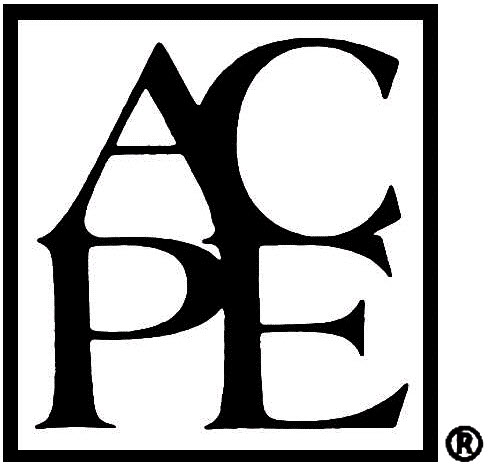Prerecorded Webinar: Patient-Facing Interactions: Pharmacy Technicians and Pharmacists Optimizing Care
Pharmacy Administration CE for Pharmacists
Are you a Pharmacy Tech? Check out the Pharmacy Tech version of this course.
Want another way to take this test? Check out the written version of this course.
Course Summary
Evidence links ineffective clinician-patient communication with increased malpractice risk, nonadherence, patient dissatisfaction, and poor patient health outcomes. Addressing interactions, including communication deficits, is paramount to the pharmacy team. Pharmacy technicians provide valuable services as part of the pharmacy team, focused on quality and safety. Listening skills, quality of information gathering, and attitude of pharmacy technicians are important when interacting with diverse patient populations. Improving the quality of pharmacy technician-patient interactions will lead to identifying problems, gaps, and patient preferences and result in increased patient and staff satisfaction. Professional practice standards and patient-facing experiences serve as guidelines for pharmacists to oversee and guide pharmacy technicians in specific situations. Successful patient interactions and services necessary to provide optimal pharmaceutical care reveal the need for optimal pharmacist-pharmacy technician alignment.
Identify characteristics that pharmacists can mentor pharmacy technicians on that lead to successful pharmacy technician-patient interactions
Summarize the potential impacts of ineffective pharmacy team-patient communication
Discuss cultural competency considerations that may impact pharmacy team-patient interactions
Identify methods during the supervision of a pharmacy technician to correct technician missteps
Course Syllabus
I. Introduction
II. The Roles of Pharmacy Technicians
III. Developing Pharmacy Technician Competencies
1. Training
2. Cultural competencies
IV. Skills and Responsibilities of Pharmacy Technicians
1. Patient Medication safety
2. Drug interactions
V. Relationships with Patients
Self-care
VI. Effective Communication is Vital
1. Drug Shortages
2. Pricing and Insurance
3. Patient Satisfaction
VII. Practice Settings Beyond Community
1. Drug Studies
2. Specialty Settings
3. Pharmacy Benefits Management
4. Transition of Care
VIII. Summary
- Read the course objectives and faculty planner disclosure
- Read the course material
- Complete the post-test with a minimum score of 70% and complete the course evaluation form.
- Results are automatically submitted to CPE Monitor
Faculty Planner Disclosure
The following individuals were involved in developing this activity: Pamela Sardo, PharmD, BS. Pamela Sardo, PharmD, BS, was an employee of Rhythm Pharmaceuticals until March 2022 and has no conflicts of interest or relationships regarding the subject matter discussed. There are no financial relationships relevant to this activity to report or disclose by any of the individuals involved in the development of this activity.
Unlabeled Use Disclosures
The information provided in this course is general in nature and it is solely designed to provide participants with continuing education credit(s). This course and materials are not meant to substitute for the independent, professional judgment of any participant regarding that participant’s professional practice, including but not limited to patient assessment, diagnosis, treatment and/or health management. Medical and pharmacy practices, rules, and laws vary from state to state, and this course does not cover the laws of each state; therefore, participants must consult the laws of their state as they relate to their professional practice. Healthcare professionals, including pharmacists and pharmacy technicians, must consult with their employer, healthcare facility, hospital, or other organization, for guidelines, protocols, and procedures they are to follow. The information provided in this course does not replace those guidelines, protocols, and procedures but is for academic purposes only, and this course’s limited purpose is for the completion of continuing education credits. Participants are advised and acknowledge that information related to medications, their administration, dosing, contraindications, adverse reactions, interactions, warnings, precautions, or accepted uses are constantly changing, and any person taking this course understands that such person must make an independent review of medication information prior to any patient assessment, diagnosis, treatment and/or health management. Any discussion of off-label use of any medication, device, or procedure is informational only and such uses are not endorsed hereby. Nothing contained in this course represents the opinions, views, judgments, or conclusions of RxCe.com LLC. RxCe.com LLC is not liable or responsible to any person for any inaccuracy, error, or omission with respect to this course, or course material.
Computer Hardware/Software Requirements
Please ensure the device you plan to use meets these requirements and specifications:
- Operating System: Windows 7,8,10, or 11 /Mac OS X 10.9 or later/iOS/Android
- Supported Browsers: Microsoft Edge, Firefox, Google Chrome, Safari, Opera
- A connection to the internet
- For Live Webinars or Conferences: GoToWebinar application for iOS, Android, Mac, or PC. You cannot 'call into' a live conference.
Rating: 3.93/5
Based on the ratings of 45 customers
- Target Audience: Pharmacist
- Secondary Audiences: This educational activity is also for other healthcare professionals, such as nurses, physicians, or others who may be part of a healthcare team and may be interested in this educational topic. A healthcare team approach to patient care may be discussed in this activity, as applicable. No state board or professional organization has evaluated this activity to determine whether it meets the continuing education requirements of nurses, physicians, or other professions not listed under the “Target Audience” described above. Always verify with individual employers or supervisors whether they will accept this educational activity upon completion.
- Contact Hours: 1.0 (0.1 CEUs)
- Activity Release Date: 9/16/2023}
- Activity Expiration Date: 9/16/2026}
- Activity Type: Knowledge
- UAN: 0669-0000-23-149-H04-P
- Topic: Pharmacy Administration
- CeBroker Number: 20-1107692
Faculty:
Preview the Materials:

RxCe.com, LLC is accredited by the Accreditation Council for Pharmacy Education as a provider of continuing pharmacy education.